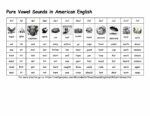The Great Vowel Shift
The Great Vowel Shift was a big change in how people pronounced vowels in English. This happened between the 15th and 18th centuries. Because of this, English sounds different from other European languages. The shift changed the way long vowels in Middle English were spoken, making them sound higher in the mouth or turning them into two vowel sounds (called diphthongs).
Here are some examples of how words changed pronunciation:
- “bite”: In Middle English, it sounded like “beet.”
- “meet”: In Middle English, it sounded like “mate.”
- “house”: In Middle English, it sounded like “hoose.”
- “boat”: In Middle English, it sounded like “boot.”
Spelling and Pronunciation
One reason English spelling does not always match pronunciation is because the spelling of words was set before the Great Vowel Shift was finished. This is why English spelling can sometimes seem strange compared to how words are pronounced. Other words affected include “food,” which used to sound like “foad,” and “name,” which used to sound like “nahm.”
This change also affected consonants. For example, the “k” in “knight” and the “gh” in “ghost” became silent during the Middle English period. “Knight” used to be pronounced with a “k” sound at the beginning, and “gh” was pronounced like the “ch” in “loch.” Today, we no longer pronounce the “k” and “gh” in “knight,” but the spelling has stayed the same. This process is called consonant simplification.
The Vowel Sounds in English
English has 12 different single vowel sounds, which can be tricky for learners. Here they are with examples:
- /iː/ as in “see”
- /ɪ/ as in “sit”
- /e/ as in “bed”
- /æ/ as in “cat”
- /ɑː/ as in “car”
- /ɒ/ as in “hot” (British English only, not in American English)
- /ɔː/ as in “saw”
- /ʊ/ as in “put”
- /u/ as in “virtual”
- /uː/ as in “blue”
- /ʌ/ as in “cup”
- /ə/ as in “sofa” (called the schwa, it is the most common sound in English)
There are also the diphthongs:
- /eɪ/ as in “ape”
- /əʊ/ as in “go” (British English only)
- /aɪ/ as in “ice”
- /ɔɪ/ as in “toy”
- /aʊ/ as in “owl”
- /ɪə/ as in “near” (British English only)
- /eə/ as in “hair” (British English only)
- /ʊə/ as in “pure” (British English only)
These sounds are not always represented by the same letters, which is why English spelling and pronunciation can be difficult to learn. But don’t worry, there are rules you can learn for pronunciation. For now, make sure to practice the different vowel sounds. The Great Vowel Shift significantly changed English pronunciation but not the spelling. This historical change, combined with the 14 distinct vowel sounds and 8 diphthongs , makes English spelling and pronunciation complex today. Understanding this can help learners make sense of some of the irregularities they encounter.
For American English, the list of single vowels changes a little:
- /iː/ as in “beat”
- /ɪ/ as in “bit”
- /e/ as in “bet”
- /æ/ as in “bat”
- /ʌ/ as in “but”
- /ə/ as in “sofa”
- /ɝː/ as in “her”
- /uː/ as in “boot”
- /ʊ/ as in “book”
- /oʊ/ as in “boat”
- /ɔː/ as in “horse”
- /ɑ:/ as in “box” or “father”
The diphthongs:
- /eɪ/ as in “bait”
- /aɪ/ as in “by”
- /ɔɪ/ as in “toy”
- /aʊ/ as in “owl”
And finally two more vowel sounds I like adding to the mix:
- /u/ as in “virtual”
- /i/ as in “happy”
Links for practice of American Vowel Sounds:
- Long and Short Vowels: https://ivanfgonzalez.com/MLstudents/LongandShortVowels.html
- Pure Vowel Sounds: https://ivanfgonzalez.com/MLstudents/VowelSoundsEnglishwithIlustrations.html
- Diphthongs: https://ivanfgonzalez.com/MLstudents/diphthongs.html



